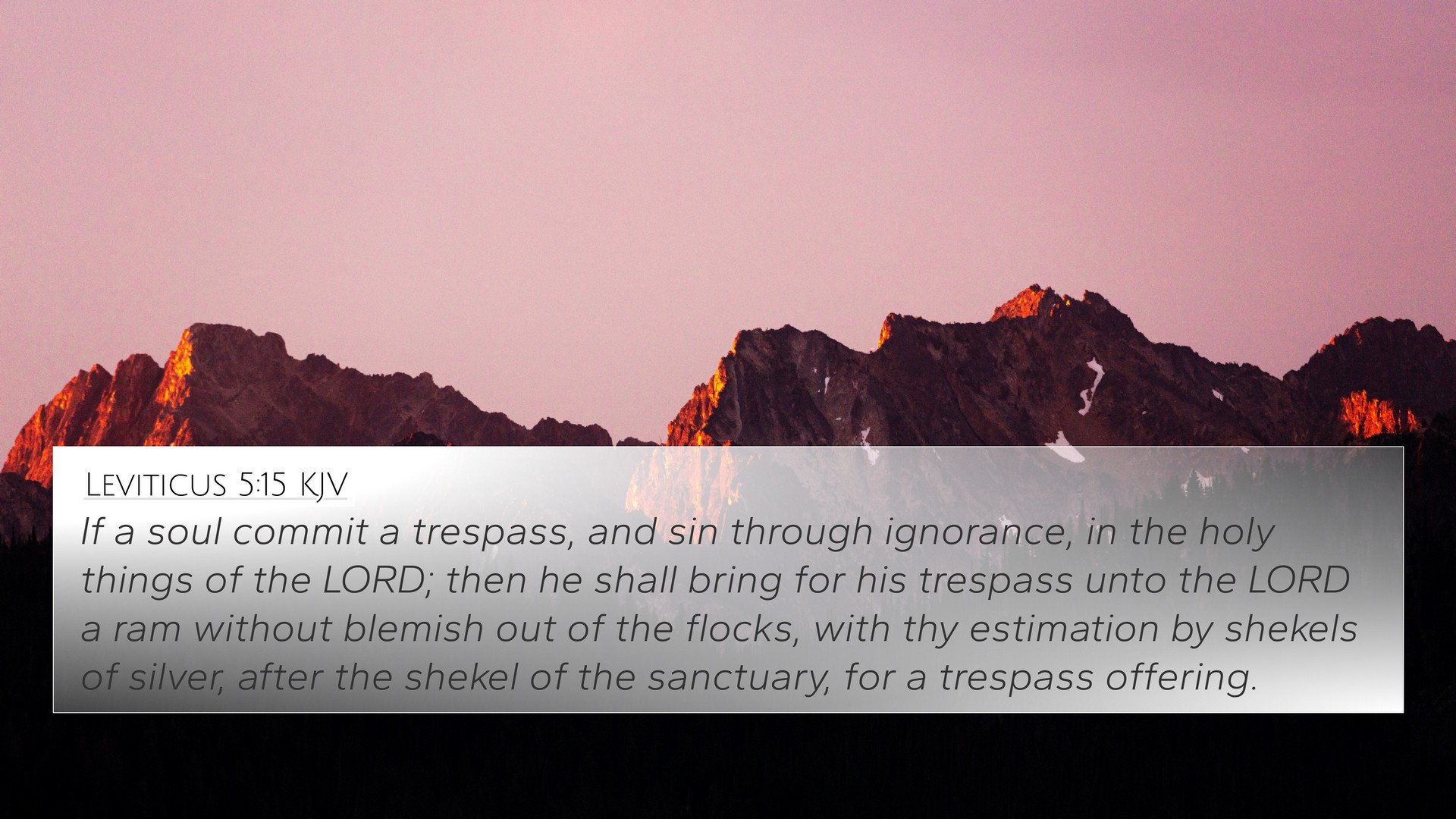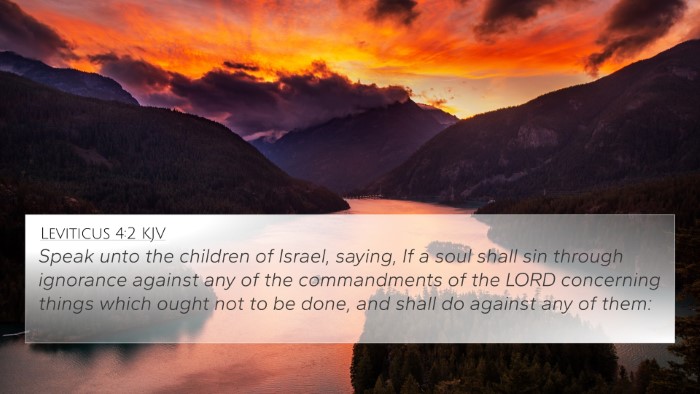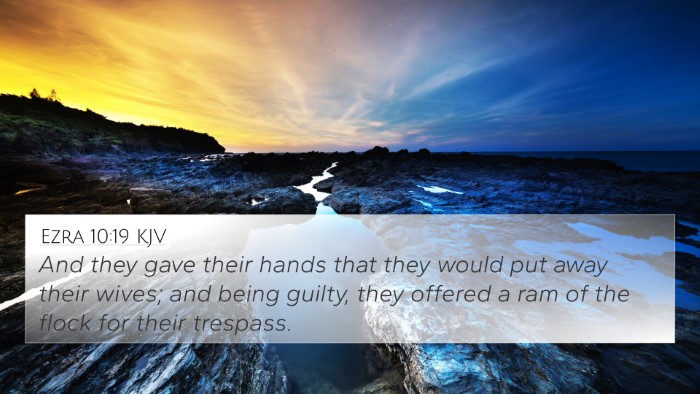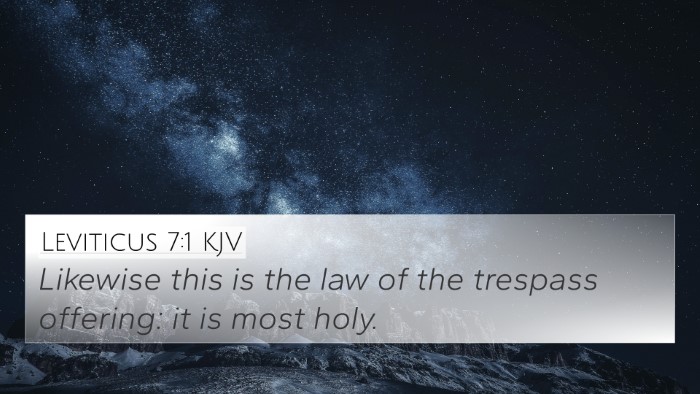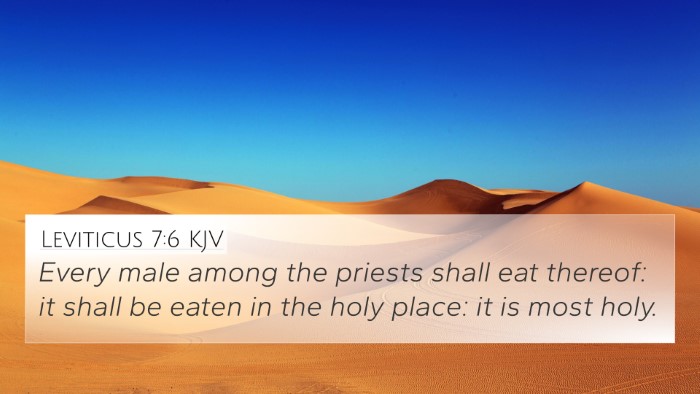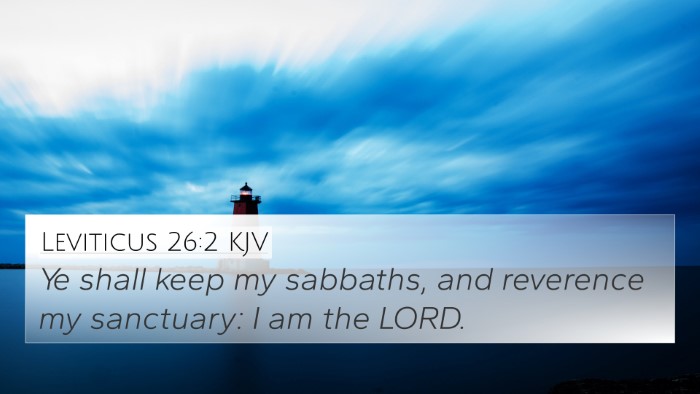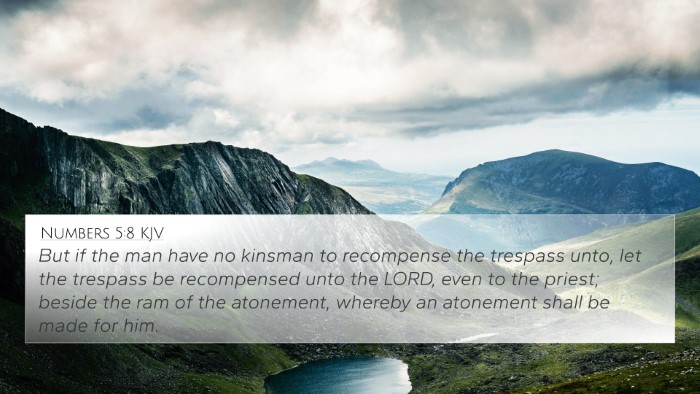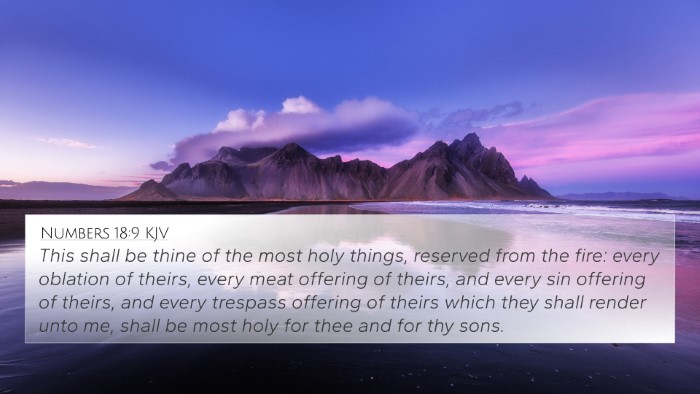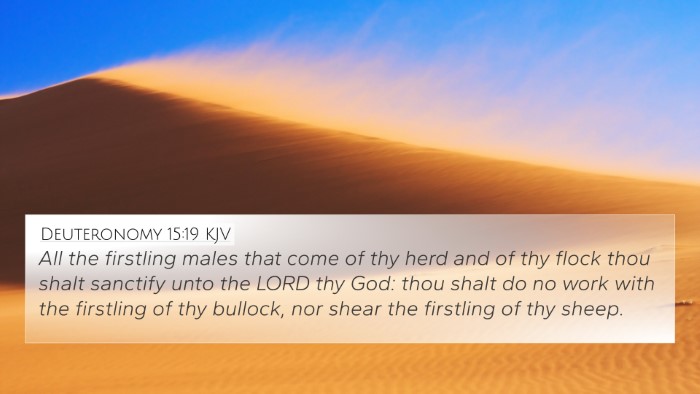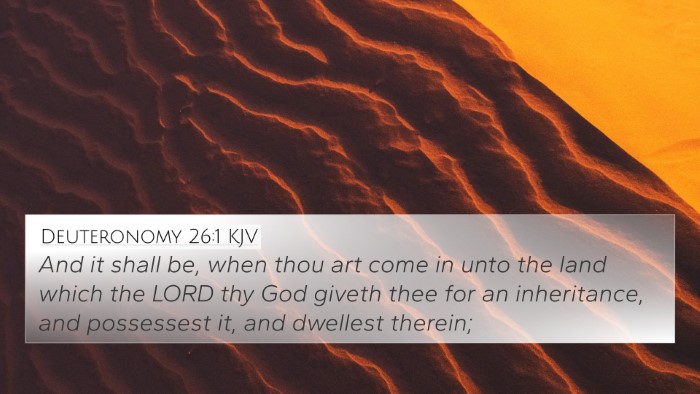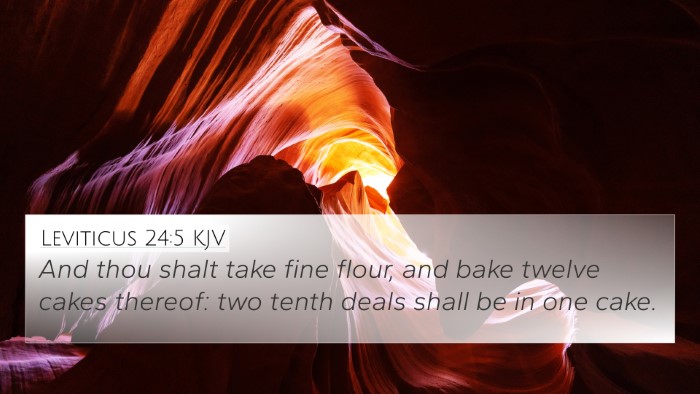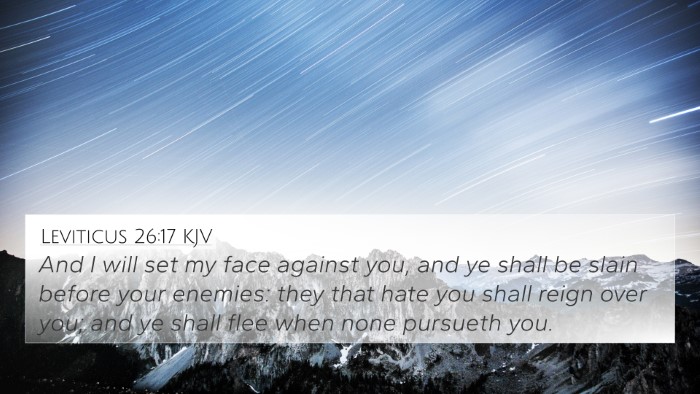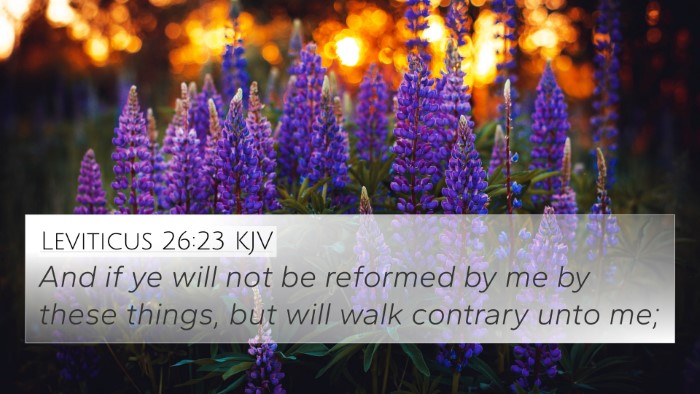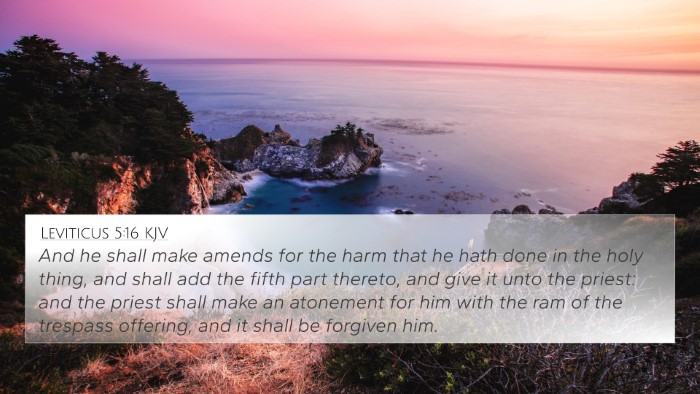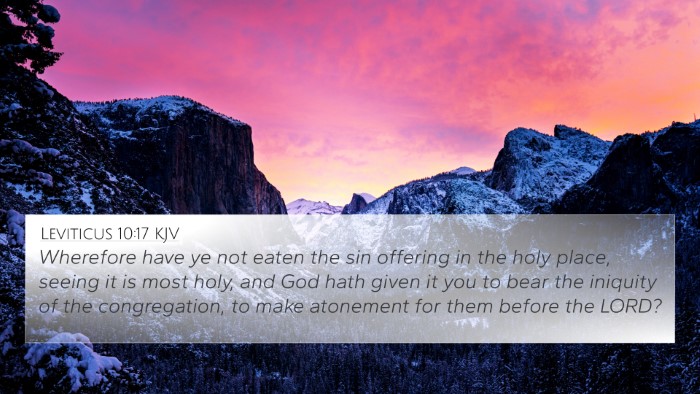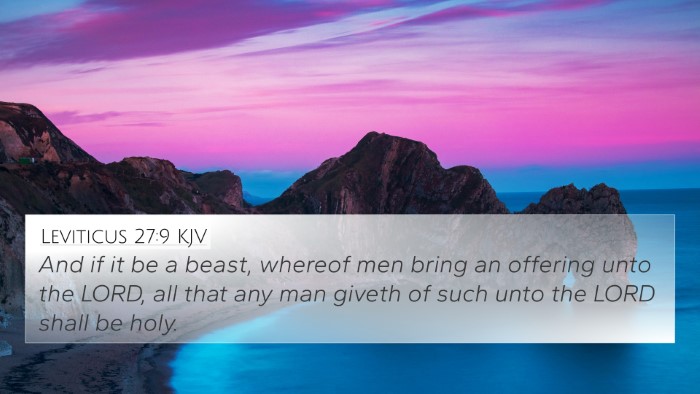Understanding Leviticus 5:15
The book of Leviticus serves as a crucial guide for the Israelites, laying down laws and instructions concerning their worship and daily living. Leviticus 5:15 addresses the regulations for sin offerings, focusing on the act of unintentional sin and how one can atone for such a transgression.
Verse Analysis
Leviticus 5:15 reads: "If a person commits a sin and realizes his guilt, he must bring his offering for the sin he has committed, a female goat without defect, to the Lord at the entrance to the Tent of Meeting." This verse emphasizes both the recognition of sin and the appropriate response. Let's explore its meaning through various commentaries.
Matthew Henry's Commentary
Matthew Henry highlights that the guilt offering signifies the seriousness of sin. Even unintentional sin separates one from God and requires restitution. This verse shows the importance of coming before God with an offering, indicating a desire for reconciliation. It is not merely about the act but also the acknowledgment of wrongdoing.
Albert Barnes' Notes
Albert Barnes points out that the sin offering underlines God's justice and mercy. The offering is a means for the sinner to recognize their guilt and seek forgiveness. The requirement of a 'female goat without defect' illustrates the notion of presenting something valuable and pure to God, underscoring His holiness.
Adam Clarke's Commentary
Adam Clarke discusses the concept of intentional vs. unintentional sin. While the individual may not have planned to commit a sin, the realization of guilt leads to critical self-reflection and the need to engage with the sacrificial system. Clarke also emphasizes how this establishes a precedent for the necessity of atonement and redemption.
Thematic Connections
- Recognition of Sin: The awareness of guilt is paramount. Knowing that one has sinned against God's commandments initiates the process for reconciliation.
- Offerings in Worship: This verse ties into the larger theme of sacrificial offerings found throughout Leviticus, demonstrating how worship and atonement are interlinked.
- Symbolism of the Goat: The use of a female goat symbolizes innocence and serves as a representation of the need for purity when approaching God.
Related Bible Cross-References
- Exodus 29:36 - Discusses the sacrificial system
- Leviticus 4:26 - Addresses the role of sacrifices in atoning for sins
- Numbers 15:27-28 - Outlines procedures for atoning for unintentional sins
- Psalms 51:17 - Emphasizes a broken spirit and contrite heart as vital for repentance
- 1 John 1:9 - Discusses confession and the faithfulness of God to forgive
- Isaiah 53:6 - Reflects on the collective iniquity of people needing atonement
- Hebrews 9:22 - Establishes that without shedding blood, there is no forgiveness of sin
Practical Application
Understanding Leviticus 5:15 is crucial for grasping broader theological concepts like sin, atonement, and God's willingness to forgive. In contemporary Christian practice, this verse serves as a reminder of personal responsibility for one's sins and the importance of repentance. Approaching God with sincere offerings—whether that be in prayer, time, or resources—can restore one's relationship with the divine.
Conclusion
Leviticus 5:15 encapsulates the essentials of recognizing sin and seeking forgiveness through appropriate offerings. This foundational principle of atonement is interwoven throughout the Bible, emphasizing God's mercy and the redemptive process available to all believers.
Exploring Further Connections
For those seeking deeper insights and understanding: consider how this verse interlocks with New Testament themes of atonement in Christ, providing a comprehensive overview of Biblical sin and redemption.
